E-scooters are almost gone. E-bikes are booming. But Seoul still hasn’t figured out whether these short rides solve a real problem or just create new ones.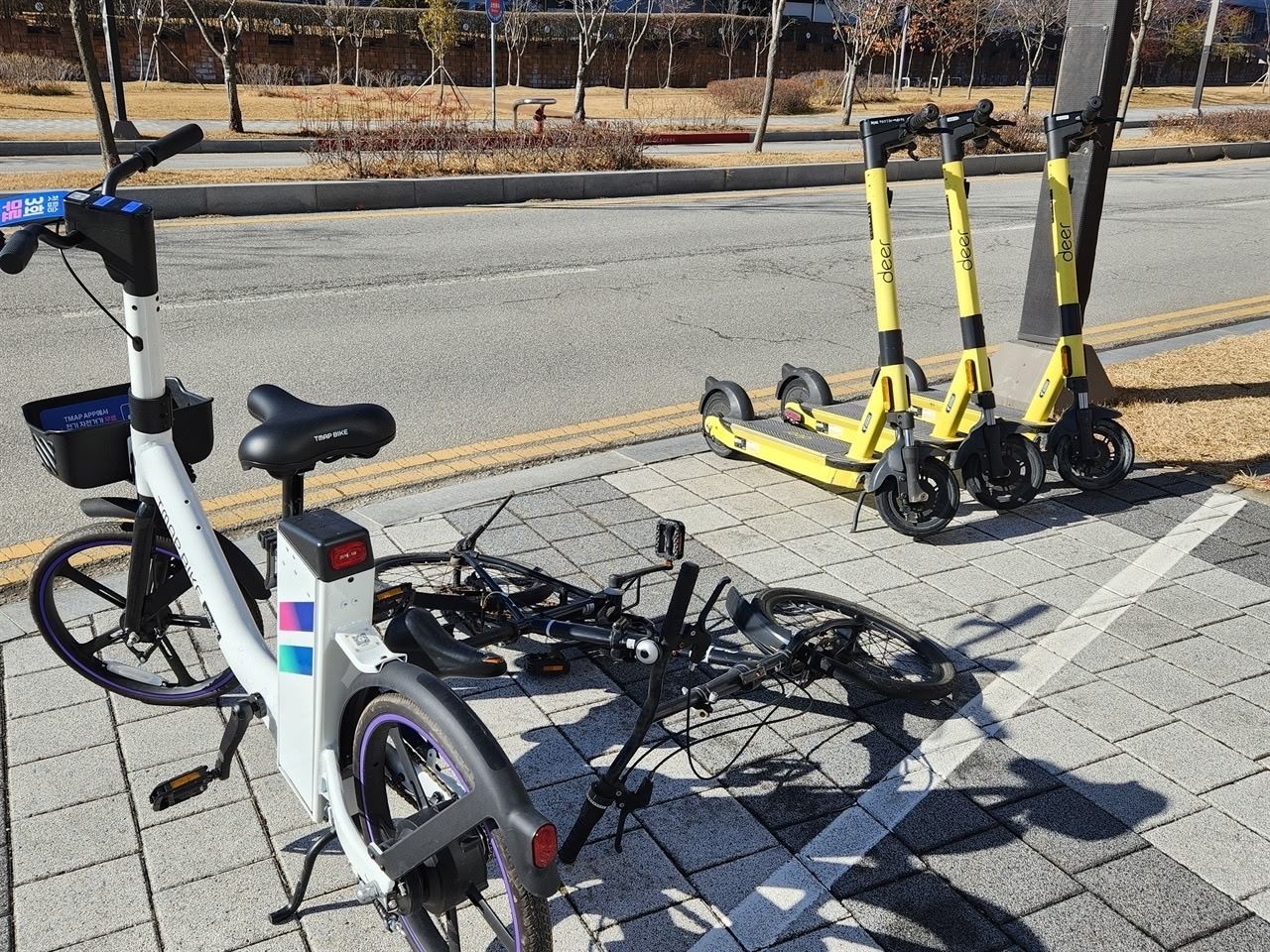 Seoul once had a thing for e-scooters. You couldn’t walk a block without dodging one parked sideways on a ramp or abandoned mid-sidewalk like a lost shopping cart. In theory, they were perfect for short trips that felt too far to walk but too close to justify a cab.
Seoul once had a thing for e-scooters. You couldn’t walk a block without dodging one parked sideways on a ramp or abandoned mid-sidewalk like a lost shopping cart. In theory, they were perfect for short trips that felt too far to walk but too close to justify a cab.
But now? Many of the scooters are gone.
“I used to ride one almost every day to get from my house to the subway,” said Kim Ji-won, a 24-year-old university student living in Seoul’s hilly Gwanak district. “I admit, I didn’t always wear a helmet. And I sometimes just left it wherever. But it saved me time and energy.”
That kind of casual convenience helped e-scooters explode in popularity. And it helped them crash just as fast.
People liked the idea. But did they really need it?
Scooters were supposed to solve Seoul’s “last-mile” problem, those short but awkward gaps between transit stops and final destinations. But in practice, they were rarely used where they were most needed.
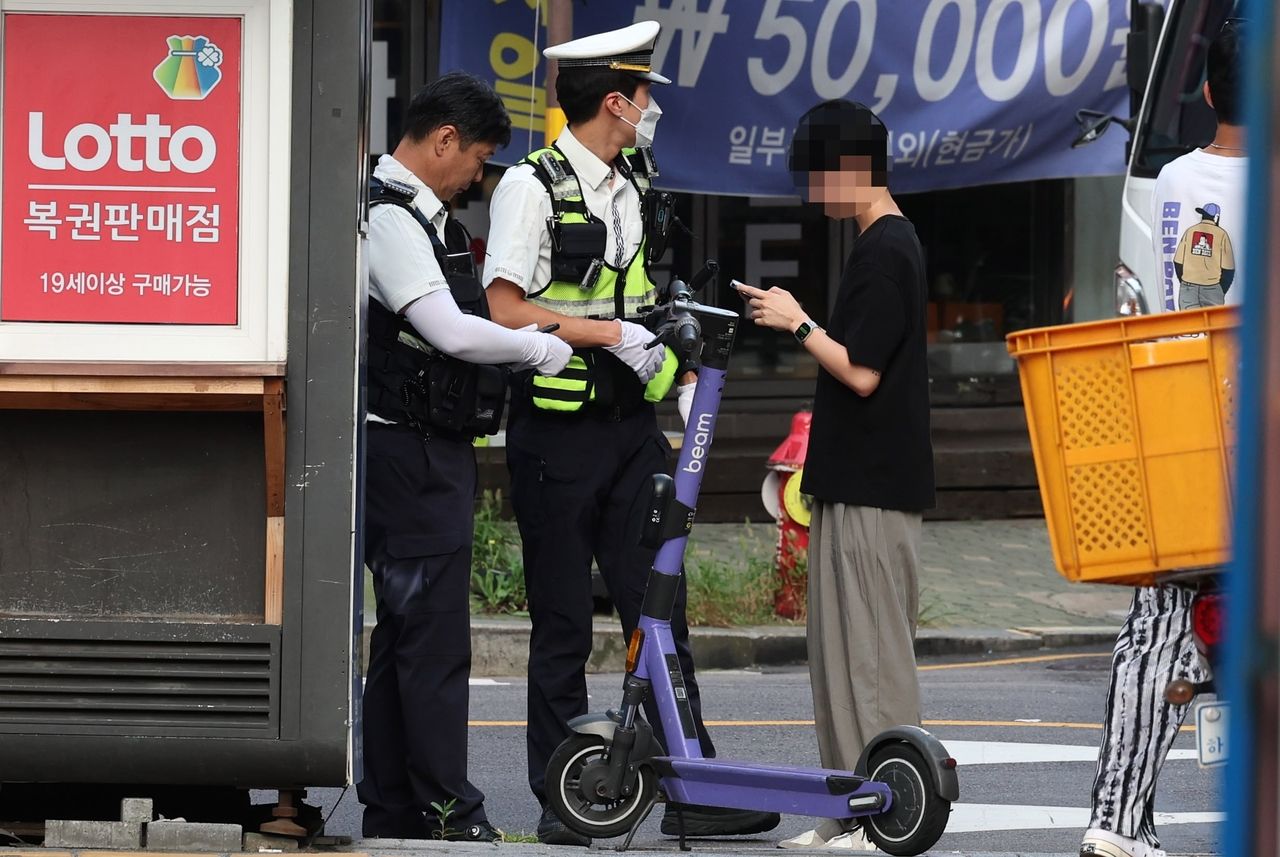 “They were convenient, sure, but mostly they were just fun,” said office worker Choi Jun-won, 27, who rode them during college. “I’d hop on one from the bar to a friend’s place five blocks away. That’s not really solving anything.”
“They were convenient, sure, but mostly they were just fun,” said office worker Choi Jun-won, 27, who rode them during college. “I’d hop on one from the bar to a friend’s place five blocks away. That’s not really solving anything.”
Data from the Seoul Institute backs this up. Instead of focusing on transit-poor districts such as northern Nowon-gu, southern Songpa-gu or parts of Seodaemun-gu, scooters clustered in dense, central neighborhoods, such as Hongdae and Gangnam. These are places already rich in subway lines and walkable streets. The mismatch wasn’t minor. It was structural.
“Operators aggressively chased user demand, not unmet mobility needs,” said Yu Kyung-sang, a researcher at the Seoul Institute. “Demand was concentrated in areas that didn’t actually need a fix.”
As more scooters appeared, so did the complaints. Sidewalks were blocked. Pedestrians felt unsafe. Accidents surged. Between 2017 and 2023, reported crashes involving personal mobility devices in Seoul increased more than twentyfold. By 2024, over 75 percent of residents surveyed said they’d been negatively affected by shared scooters.
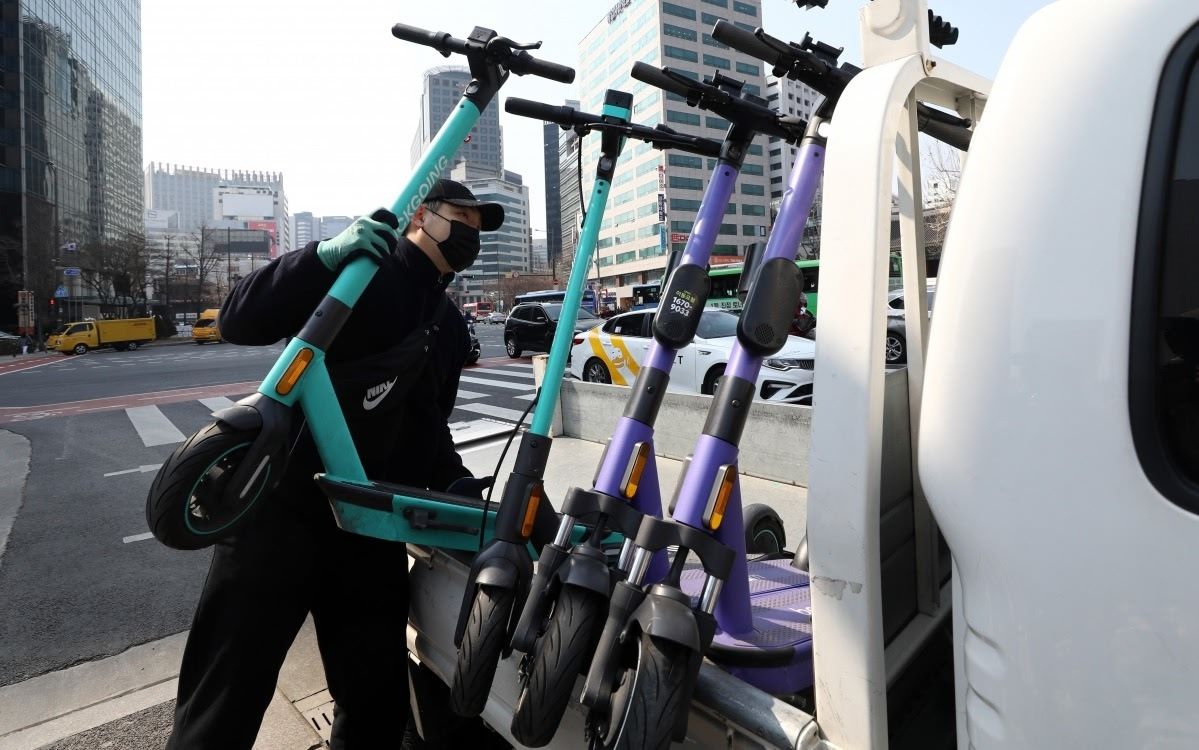 And then came the crackdown. The city began enforcing helmet laws, license requirements, and most decisively, parking regulations. Any scooter parked illegally, including those left casually at subway exits or across curb cuts, could be towed, with a fine of 40,000 won (roughly $30) per incident charged to the operator.
And then came the crackdown. The city began enforcing helmet laws, license requirements, and most decisively, parking regulations. Any scooter parked illegally, including those left casually at subway exits or across curb cuts, could be towed, with a fine of 40,000 won (roughly $30) per incident charged to the operator.
For startups trying to run lean, it was a death sentence. One of the biggest players, The Swing, suspended operations in Seoul by the end of 2024. “There were months where towing fees wiped out our entire revenue,” said Kim Young-hoon, the company’s communications lead.
But the public problem didn’t vanish with the scooters. It just changed form.
Now it’s e-bikes everywhere. And the city’s already nervous
With e-scooters declining in use, e-bikes slid in quietly. Most of them are pedal-assist bikes. They give riders a gentle boost, but only when pedaling. You don’t need a license, there’s no helmet requirement, and critically, there are almost no towing rules.
Which means e-bikes are now filling the role scooters used to play, and increasingly, the same sidewalks.
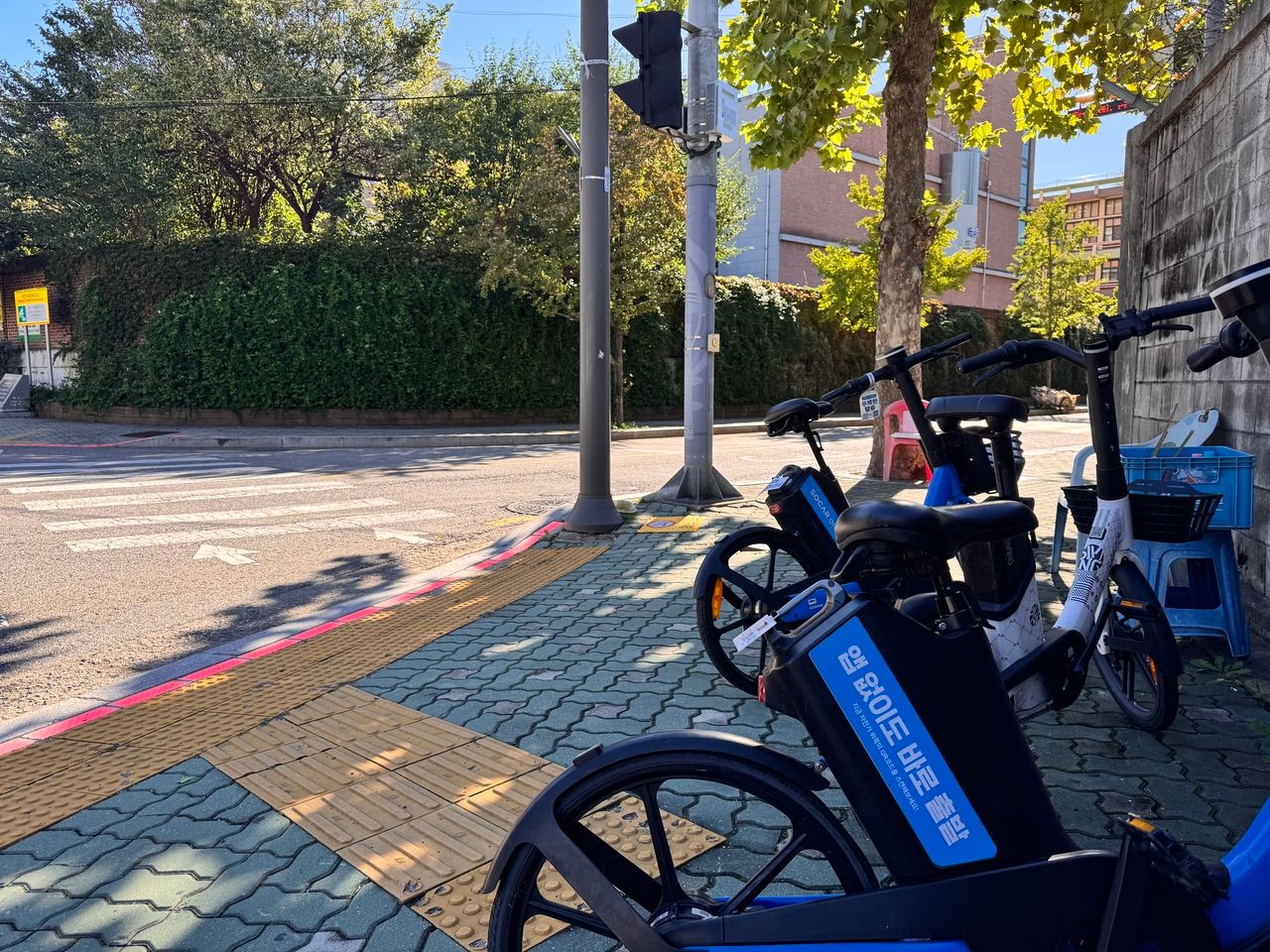 “We’re starting to get the same complaints,” said Kim Dong-hyun, a Seoul city official in charge of pedestrian and cycling infrastructure. “The difference is, we don’t have clear legal authority to tow or regulate them in the same way. They’re still technically bicycles.”
“We’re starting to get the same complaints,” said Kim Dong-hyun, a Seoul city official in charge of pedestrian and cycling infrastructure. “The difference is, we don’t have clear legal authority to tow or regulate them in the same way. They’re still technically bicycles.”
It’s a loophole, and people are riding through it.
To be clear, e-bikes are safer in some ways. Riders have to pedal, which discourages reckless stunts. But they’re also bigger, heavier, and still end up blocking sidewalks, crosswalks and building entrances.
“E-bikes are just e-scooters in disguise,” said Choi Hye-mi, a 63-year-old retiree in Mapo-gu. “If I have to step around them every morning, what’s the difference?”
The real problem is that Seoul never decided what it wanted
Despite the backlash, demand for personal mobility has always been real, even in a transit-rich city like Seoul. In many neighborhoods, the walk to the station or the bus stop is just far enough to be annoying. Think 12 uphill minutes with groceries, or a 1.5-kilometer gap between your apartment and the nearest subway line.
“There are parts of Seoul where public transport is surprisingly weak,” said Yu Kyung-sang of the Seoul Institute. “But shared mobility never really reached those areas with proper parking support from Seoul city. That’s a planning failure, not just a business decision.”
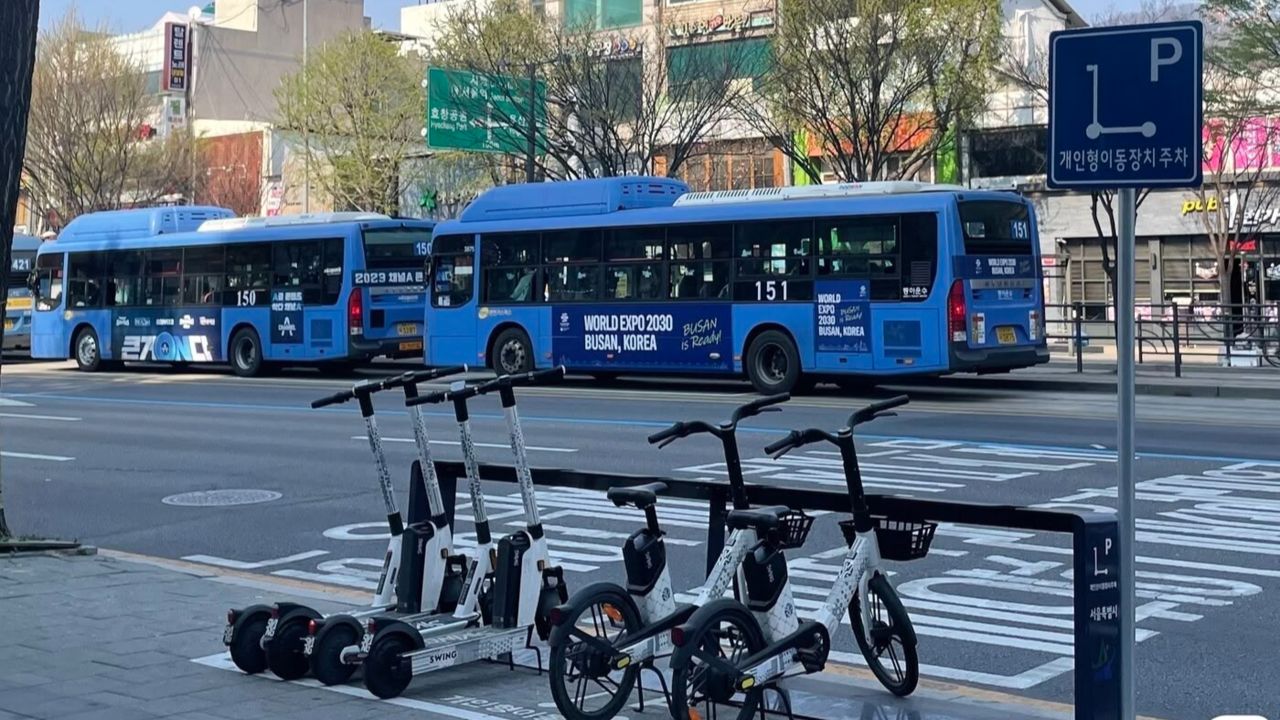 To its credit, the city did try. As of July, Seoul had installed over 300 designated parking zones for PM devices. But that worked out to just one zone per 100 scooters.
To its credit, the city did try. As of July, Seoul had installed over 300 designated parking zones for PM devices. But that worked out to just one zone per 100 scooters.
“Micromobility got dropped into the city without a real plan,” said Ko Joon-ho, an urban mobility professor at Hanyang University. “Then when problems came up, the city overreacted and overregulated.”
Ko doesn’t believe scooters or bikes belong on every street corner. But he argues that Seoul needs a smarter, more tailored approach, such as setting aside zones where these tools make the most sense, investing sufficiently in proper parking spaces, and connecting them to the larger public transport network.
“You can’t just pretend they’re not there,” he said. “People still need a greater variety of ways to get around, especially people who don’t drive. If the city keeps sending mixed messages, no one wins.”
- Why veteran pansori singer Lee Ja-ram takes on one-woman battle in ‘Prima Facie’
- Father and son asylum-seekers live in airport holding room for 4 months
- HD Hyundai to showcase next-gen shipbuilding tech at APEC summit
- Free performances across Gyeongju celebrate vibrant Korean traditions ahead of APEC
- Blackpink’s Jisoo scores 1st solo entry on Billboard’s Hot 100









Most Commented